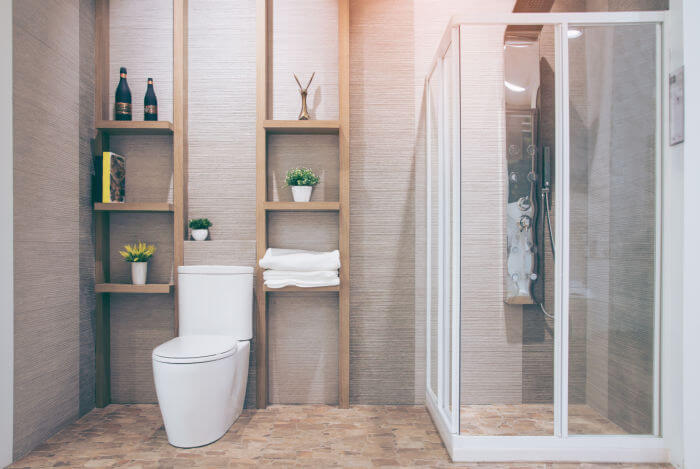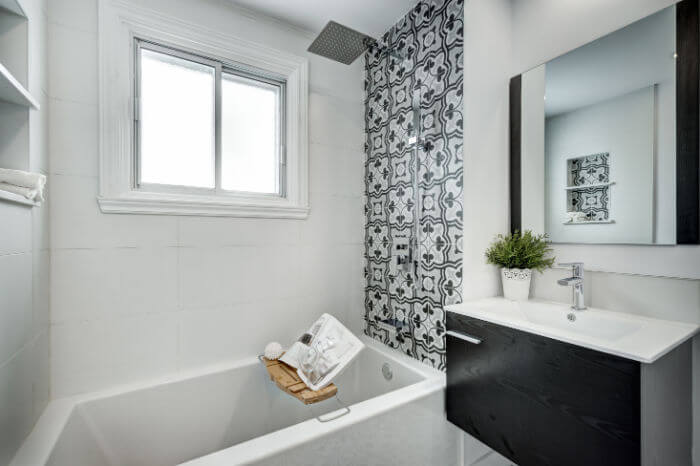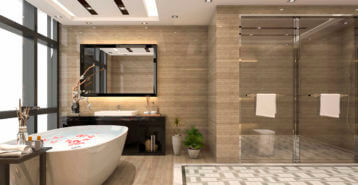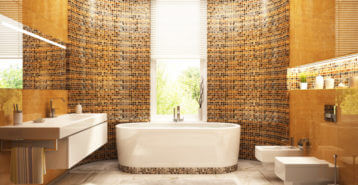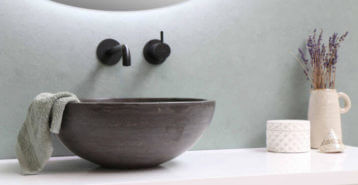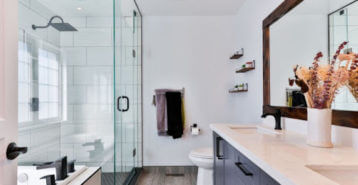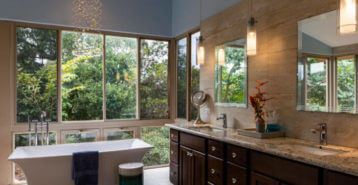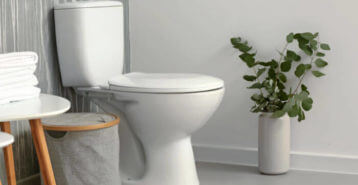Adding a bathroom to your home can significantly improve its functionality and increase its value. Whether you’re considering a half bath, full bath, or master bathroom, understanding the costs involved is crucial for effective budgeting. In this guide, we’ll break down the 2024 costs to add a bathroom, explore the factors influencing these expenses, and offer tips for managing your budget.
Benefits of Adding a Bathroom to a Home
Renovation projects both large and small often bring increased homeowner satisfaction with their residences. Installing a bathroom has some specific benefits as well. These can include:
- Making room for an expanding family. If additional kids are on the way, or you have a large blended family, installing a bathroom can alleviate many time and usage issues.
- Increased privacy. Adding a bathroom creates additional space for homeowners and family members to take care of bathroom business in peace without worrying about who needs to use the space next.
- Increased resale value. A new bathroom can boost the overall price of your home during resale. According to the National Association of Home Builders, adding a half bath to your home can increase your home’s resale value by 10%, while adding a full bath can add 20% or more to your home value.
- Improved guest accommodations. Adding a bathroom can transform a single bedroom into a comfortable guest retreat. For example, consider adding a bathroom to your basement or upper floor to create a private guest area of the home.
Factors Affecting the Cost of Adding a Bathroom
The cost to add a bathroom varies widely based on several factors. Here are some key elements that can influence your total expenses:
- Plumbing and Electrical Work: Complex installations requiring extensive plumbing and electrical work can significantly increase costs.
- Material Quality: High-end fixtures, tiles, and finishes come at a premium, while more budget-friendly options can help keep costs down.
- Structural Modifications: Adding a bathroom in a new location may necessitate structural changes, such as reinforcing floors or modifying walls, impacting the overall price.
- Permits and Inspections: Local regulations may require permits and inspections, adding to the cost.
- Labor Costs: Labor costs can vary based on your location and the experience level of the contractors you hire.
Average Bathroom Addition Costs by Type
Here’s a detailed breakdown of average costs for different types of bathroom additions in 2024:
Half Bath
- Cost Range: $7,000 – $15,000
- Description: A half bath, also known as a powder room, typically includes a toilet and a sink. It’s often added for convenience in high-traffic areas or for guests.
Full Bath
- Cost Range: $15,000 – $25,000
- Description: A full bath includes a toilet, sink, and a shower or bathtub. It provides all the necessary facilities for a household and is a popular choice for additions.
Master Bath
- Cost Range: $20,000 – $30,000+
- Description: A master bath is usually attached to a master bedroom and includes a toilet, double sinks, a shower, and a bathtub. It often features luxury finishes and more space.
Detailed Cost Breakdown
To give you a clearer picture of where your money goes, here’s a detailed breakdown of typical bathroom addition costs:
- Labor: $3,000 – $10,000
- Plumbing: $1,000 – $5,000
- Electrical Work: $500 – $2,500
- Fixtures (toilet, sink, shower/tub): $1,500 – $7,000
- Tile and Flooring: $1,000 – $5,000
- Permits and Inspections: $500 – $2,000
- Additional Expenses: $500 – $1,500 (e.g., demolition, disposal, structural modifications)
Regional Variations
It’s important to note that costs can vary significantly based on your location. Here are some regional factors that may affect prices:
- Urban vs. Rural: Urban areas typically have higher labor and material costs compared to rural regions.
- Local Building Codes: Stringent building codes and regulations can add to the cost due to additional requirements for permits and inspections.
- Availability of Materials: The cost and availability of materials can vary by region, impacting overall expenses.
How Much Does it Cost to Add Space to Existing Bathrooms?
In some instances, homeowners may be able to increase the square footage of an existing bathroom without increasing the total footprint of their homes. This path would likely prove much less expensive, since your bathroom remodel contractor would not have to build a foundation for a completely new bathroom addition.
On average, homeowners can expect to pay around $15,000 to add space to existing bathrooms. Another way to calculate rough costs is to figure around $125 to $250 per square foot. Factors that will greatly impact overall project costs include the extent of demolition and new construction, total size, adding new plumbing and electrical, and the quality and type of fixtures you choose for your bathroom extension project.
Converting an Existing Room Into a Bathroom
Homeowners with unused or additional space in their homes may be able to convert some of that existing space into a bathroom. There can be many benefits of following this course of action. Buildout is likely to be much less expensive than expanding on your home’s footprint, and it could maximize the space already under roof.
A baseline cost is around $15,000, but homeowners could pay much less or more depending on various factors, such as the location of the bathroom within the home and complexity of turning the existing space into a functioning bathroom. Another way of looking at the job is to calculate square footage – in this case, the work will cost around $125 to $250 per square foot.
Here are some more specific costs for bathroom conversions by area of the home.
Attic
An unfinished attic that is bare framing will cost more than an attic that has been properly finished with sheetrock and other interior fixtures. Costs could run between $8,000 and $35,000 for an unfinished space, and $8,000 to $15,000 for finished attic spaces. Much of the cost will depend on how difficult it will be to bring plumbing up to the space.
Basement
A basement bathroom is admirable for many reasons, but especially if the room is finished and livable. Just like the attic, costs for adding a bathroom to your basement are largely determined by how the space is being used. If your basement is fully finished, expect to pay between $8,000 and $15,000. You could potentially save a lot on infrastructure, however, since plumbing and electrical are usually in close proximity to basement spaces.
Garage
If you have an oversized garage and have room to spare to add a bathroom, this may be a good route to go. It can cost around $8,000 to $25,000 to install a full bathroom in a garage.
Closet
Some homeowners may choose to convert a large closet into a half or small bathroom. This type of conversion really depends on the size of the closet and the availability of plumbing and electrical nearby. Costs could run anywhere from $5,000 to $20,000 depending on difficulty and whether you want a full or half bathroom.
Upstairs bedroom
Adding bathrooms to upstairs spaces can be expensive if it requires new water, power and waste infrastructure. Expect to pay around $8,000 to $35,000.
One way to cut costs here is to install a half-bath (just a sink and toilet) rather than a full bath with a shower and tub, especially for smaller or less-used spaces in the home.
Converting a Half Bath Into a Full Bath
Full bathrooms are often more desirable for larger families than half baths. They can alleviate congestion for the shower during morning prep time or after a long weekend away at the beach. Costs to add a shower or tub to convert a half bathroom into a full bathroom could run anywhere from $5,000 to $25,000 depending on the quality of finishes and availability of plumbing drain lines. Although it’s a costly venture, you could potentially reap additional returns during resale.
Budgeting Tips for Your Bathroom Addition
- Plan Ahead: Thoroughly plan your bathroom addition to avoid unexpected costs and delays.
- Get Multiple Quotes: Obtain quotes from several contractors to ensure competitive pricing and choose the best value.
- Choose Quality Materials Wisely: Invest in quality materials that fit your budget. High-quality materials may have a higher upfront cost but can save money on repairs and replacements in the long run.
- Consider DIY Options: For those with the skills, tackling some tasks yourself, such as painting or installing fixtures, can reduce labor costs.
Ready to Add a New Bathroom?
Adding a bathroom is a significant investment that can enhance your home’s comfort and value. By understanding the costs and factors involved, you can make informed decisions and effectively manage your budget.
Ready to add a new bathroom to your home? Get free quotes from local bathroom remodeling experts now!
Compare top-rated bathroom remodel pros in your area.
Read real homeowner reviews, explore qualifications, and view promotions. Modernize makes it easy to browse professionals and find one that will be perfect for your project.

